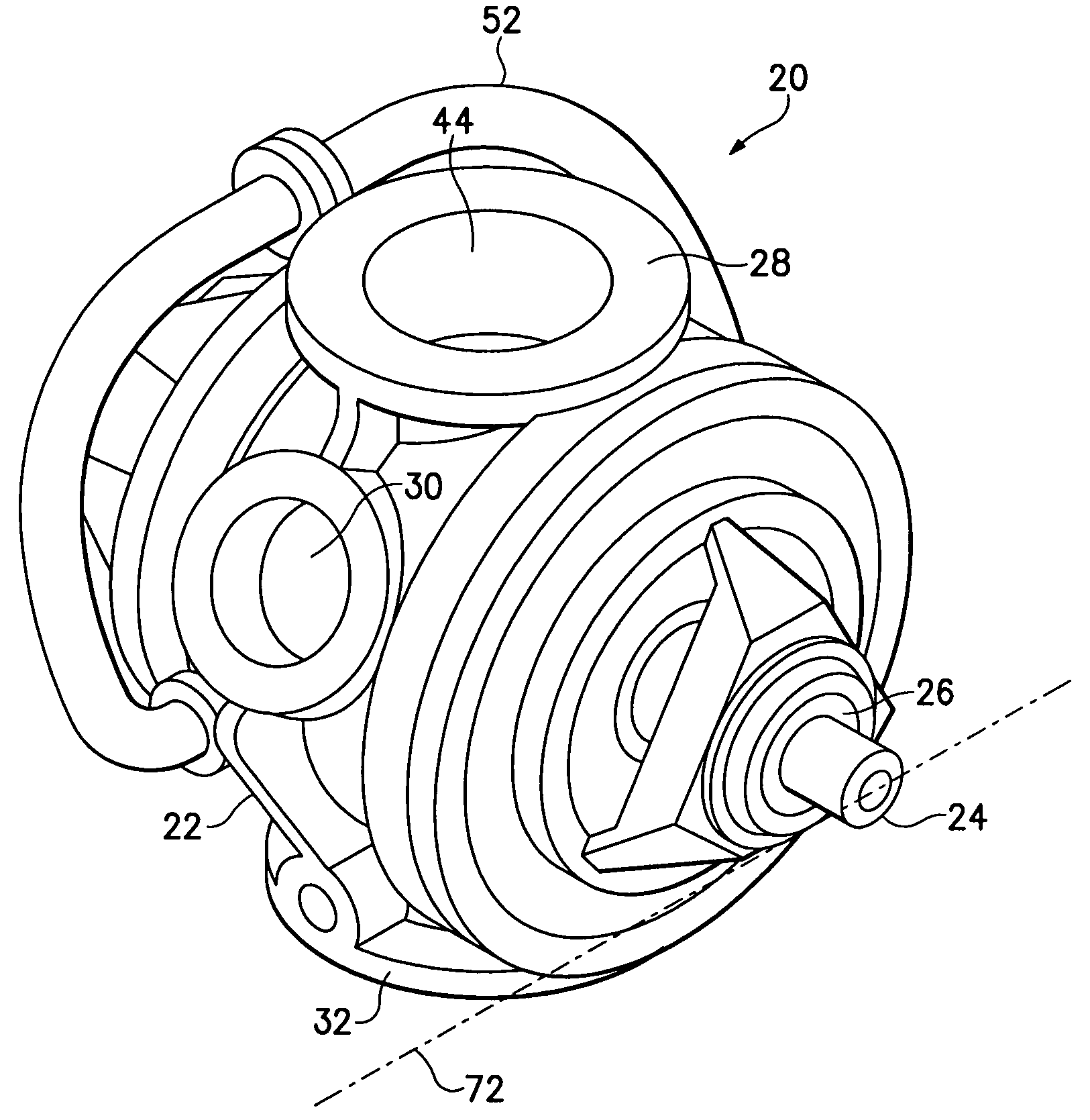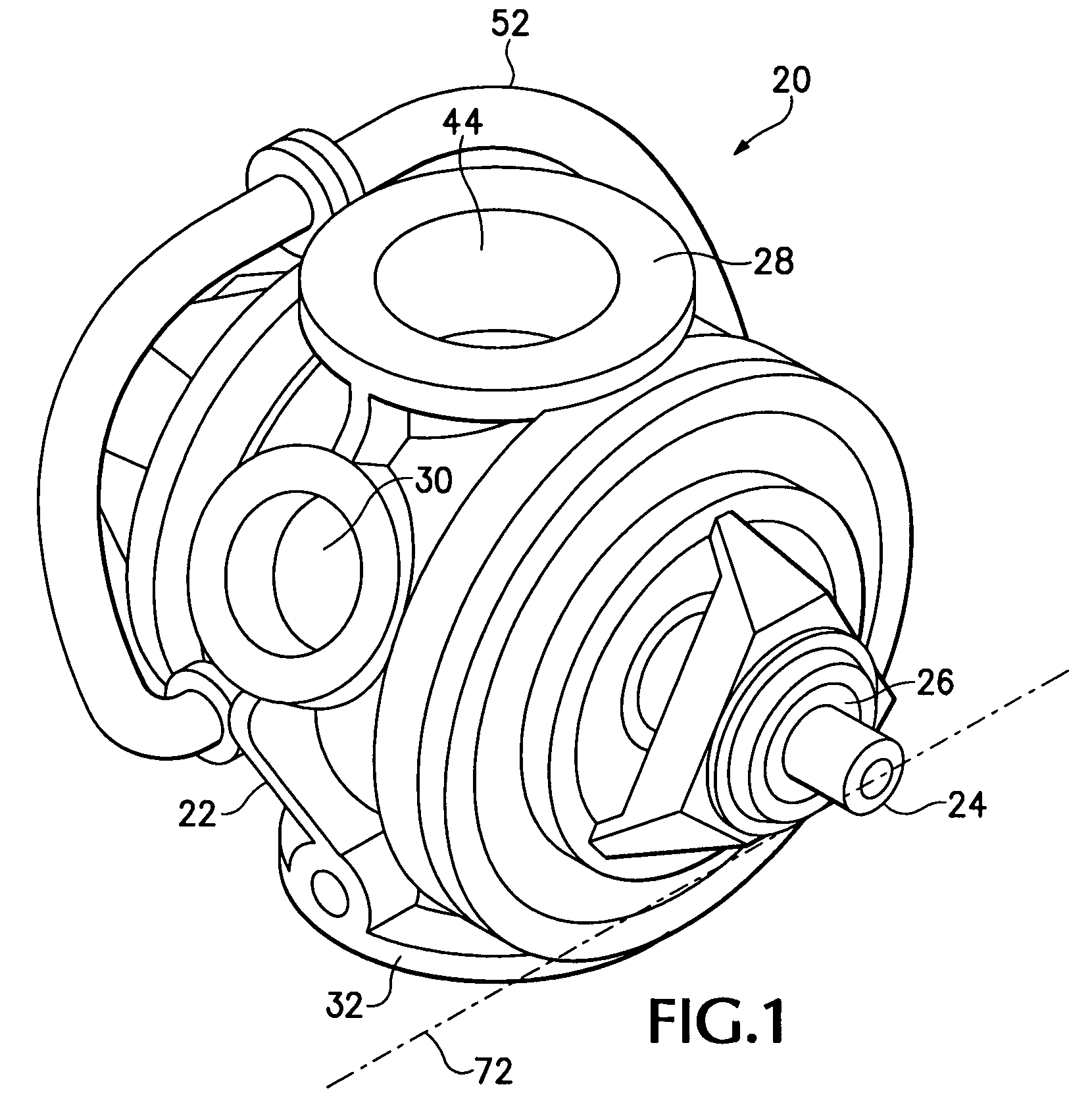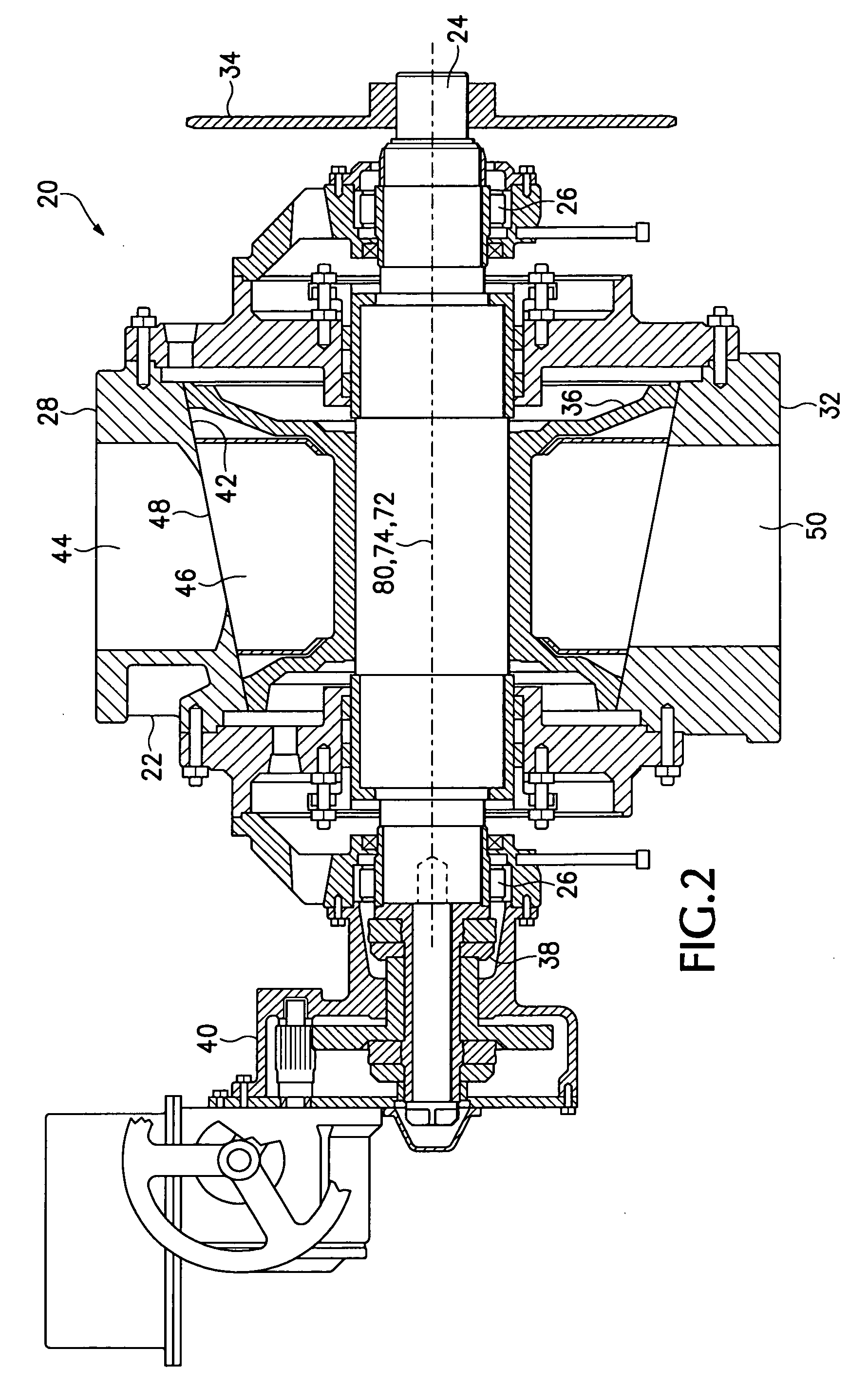Tapered high pressure rotary feed valves
a high-pressure rotary and feed valve technology, which is applied in the direction of manufacturing tools, solventing equipment, other domestic objects, etc., can solve the problems of excessive leakage into the end-bell, long wear-in period of such valves, and waste of heat, so as to reduce the distortion of the shape as a result of unequal temperatures, the effect of reducing the pressure loss and shortening the tim
- Summary
- Abstract
- Description
- Claims
- Application Information
AI Technical Summary
Benefits of technology
Problems solved by technology
Method used
Image
Examples
Embodiment Construction
[0039]Referring to the drawings which form a part of the disclosure, FIG. 1 shows a tapered rotary feed valve 20 having a housing or body 22 and a rotor including a shaft 24 of which the ends are carried by radial bearings 26. The valve body 22 has an upper, or inlet side 28 that may include a flange or other fitting to receive a conduit carrying a flow of material such as wood chips to be fed through the feed valve 20. An exhaust port 30 may be provided to relieve pressure from within the body 22. A bottom or outlet side 32 may include a flange by which to mount the valve 20 on a top of a container of material kept at an elevated temperature and pressure, into which the valve 20 may be used to continuously feed additional particulate material.
[0040]As shown in FIG. 2, the valve 20 may have a sprocket 34 mounted on the shaft 24 to rotate the tapered rotor 36 within the body 22. A thrust bearing 38 is adjustable by a mechanism 40 to move the rotor 36 axially relative to the body 22. ...
PUM
| Property | Measurement | Unit |
|---|---|---|
| length | aaaaa | aaaaa |
| diameter | aaaaa | aaaaa |
| pressure | aaaaa | aaaaa |
Abstract
Description
Claims
Application Information
 Login to View More
Login to View More - R&D
- Intellectual Property
- Life Sciences
- Materials
- Tech Scout
- Unparalleled Data Quality
- Higher Quality Content
- 60% Fewer Hallucinations
Browse by: Latest US Patents, China's latest patents, Technical Efficacy Thesaurus, Application Domain, Technology Topic, Popular Technical Reports.
© 2025 PatSnap. All rights reserved.Legal|Privacy policy|Modern Slavery Act Transparency Statement|Sitemap|About US| Contact US: help@patsnap.com



